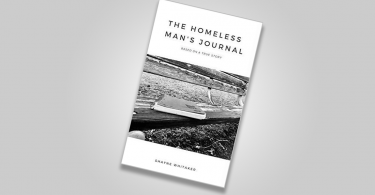The Color Purple by Alice Walker is an esteemed classic, and after reading devouring it for Emma Watson’s feminist book club, it isn’t hard to see why.
Emma has – whether consciously or not – began Our Shared Shelf with two brutally honest, unapologetic pieces of literature. Choosing a novel by an African-American author instilled some vital intersectionality into the club. As the Goodreads group banner reads: Feminism is for everyone.
Do you need literature inspiration? Check out @EmWatson‘s #OurSharedShelf on @goodreads https://t.co/KZrkhBveS6 pic.twitter.com/IrvlW5qxlp
— The 100% Project (@100PercentProj) March 6, 2016
The overriding theme of The Color Purple is that of circumstance: through no fault of her own, Celie Harris has found herself in a life where she is repeatedly abused and undermined. Despite the awful hand she has been dealt, she embarks on her own journey to empowerment.
Each month, the Goodreads discussion proves even more insightful. It offers interpretations of the text that allow you to broaden your mind. The amount of times I have exclaimed, “Yes! I agree!” at the screen after someone made a particularly interesting observation is quite frankly astounding.
“I loved how the author showed us the impact society and education has on sexism. When Celie was growing up she had to fit in the predefined role from her “dad” and society. The people around her and her family expected that. Quite contrary to that is Shug- she grew up completely different and is quite happy with her life. And there are the native Africans. Women there seem not to even notice that they are discriminated against, seeming like there has never been anyone who has tried to rebel.”
“The story did a terrific job at integrating both racism and sexism; I simply cannot imagine what it would have been like for Celie, or anybody to suffer from both.”
A lesson in self-worth
Alice Walker follows Gloria Steinem as the second study of the book club (incidentally the two are friends) and The Color Purple is equally personal as My Life on the Road was, with its epistolary style. Through a series of prayers and letters, Celie gradually learns of her own importance in the world. The novel is beautifully written, and witnessing Celie’s growth and self-empowerment as she grew into a strong, independent woman – demonstrated by her progression into more complex language – was endearing.
In her preface, Alice Walker explains that for her, The Color Purple remains the “theological work examining the journey from the religious back to the spiritual that I spent most of my adult life, prior to writing it, seeking to avoid.” Although not an autobiographical character, Celie too shifts from religion to spirituality. Her prayers to God are exchanged for letters to her sister, Nettie.
Nettie appears as the antithesis to Celie, and everything that Celie could become. As the younger, more headstrong sibling, Nettie was able to escape the life destined for her and join the missionaries in Africa. She is not afraid to assert her right to freedom:
“A girl is nothing to herself; only to her husband can she become something.
What can she become? I asked.
Why, she said, the mother of his children. But I’m not a mother of anybody’s children, I said, and I am something.”
It would have been easy – unfair and inaccurate, perhaps, but easy – for Alice Walker to illustrate the male characters in the novel as wholly oppressive and sexist. However, we see that they exhibit behaviours that they see as acceptable and suppress any ambitions to engage in “feminine” activities. Mister enjoyed sewing until it threatened his masculine image. His eventual journey of redemption humanises him and allowed him to move past the role of Celie’s persecutor.
“Sexism towards women is portrayed in the book the same as it is in reality: A false conduct of society upheld by those stunted in emotional and spiritual growth.”
Disrupting gender roles forms a pivotal part of The Color Purple. Contrary to ingrained stereotypes, Harpo is insecure because of his failure to conform to masculinity, while Sophia is aggressive and retaliates when attacked.
Perhaps the most striking thing about the novel is that the themes seem to transcend time. It was adapted for the big screen in 1985, and is now appearing on Broadway.
Thirty-three years after publication, the novel raises incredibly relevant issues. In the same way that there was a predisposed idea of what Celie would become, women are still expected to be home-makers and child-bearers above any of their own ambitions. Fifty per cent of the general population are excluded from jobs that are classified as “for men”, and miss out on an equal pay packet. It is 2016, so let’s go out and achieve equality for all.
Join ‘Our Shared Shelf‘ on Goodreads.com, in time for March’s book: All About Love: New Visions by Bell ooks, and read January’s review here.










